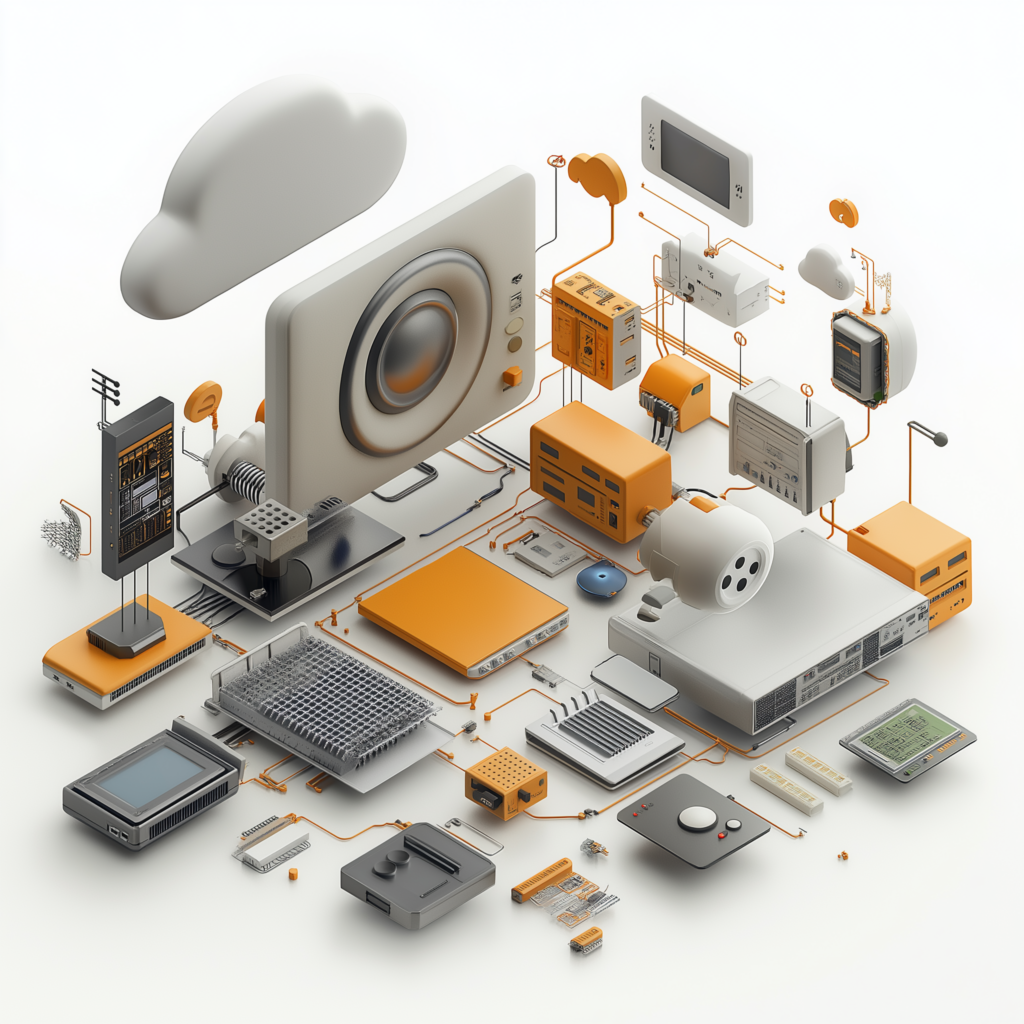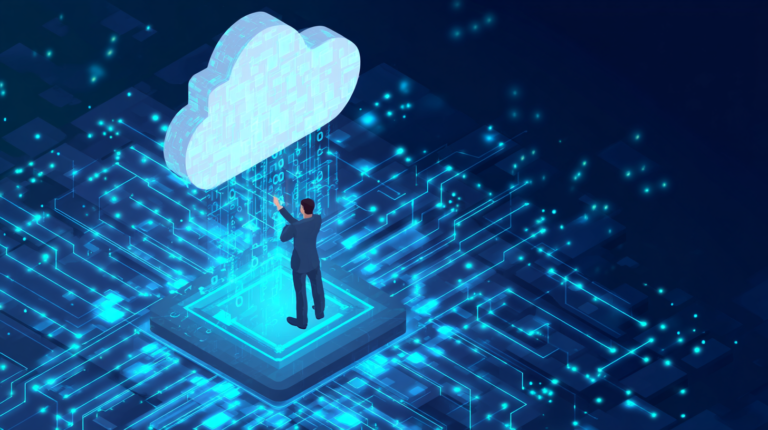Azure IoT Hub and Edge Computing: Paving the Way for Intelligent IoT Solutions

Introduction:
The world is becoming increasingly interconnected, with billions of devices transmitting data to the cloud. However, as more devices come online, traditional cloud-based processing can sometimes face limitations, particularly when low latency, real-time decision-making, or bandwidth efficiency is needed. This is where Azure IoT Hub and Edge Computing step in—offering businesses the ability to process data closer to the source, reducing latency, enhancing security, and optimizing operations.
What is Azure IoT Hub?
Azure IoT Hub is a fully managed cloud service provided by Microsoft that acts as the backbone for building, deploying, and managing IoT applications. It facilitates the communication between IoT devices and cloud-based systems, enabling organizations to securely connect millions of devices, manage them remotely, and analyze data to derive insights that power intelligent applications.
Key Features of Azure IoT Hub:
- Device Management: Azure IoT Hub allows you to monitor, update, and configure devices remotely, ensuring they are running securely and are always up-to-date.
- Secure Communication: With built-in authentication, encryption, and role-based access control, Azure IoT Hub ensures that data is securely transmitted between devices and the cloud.
- Scalable: Whether you have a handful of IoT devices or millions, IoT Hub scales effortlessly to meet the demands of your business, without compromising performance or security.
- Real-Time Insights: By enabling fast and reliable device-to-cloud communication, Azure IoT Hub lets businesses capture real-time data from devices, making it easier to monitor performance, detect issues, and optimize operations.
What is Edge Computing?
Edge Computing refers to processing data closer to where it is generated, rather than sending it all the way to a centralized cloud server. This reduces latency, ensures faster decision-making, and is particularly beneficial in environments where real-time data processing is required.
With Azure IoT Edge, you can extend the capabilities of IoT Hub to process data locally on devices or gateways at the edge of the network. By running cloud workloads on edge devices, Azure IoT Edge ensures that devices can continue to function autonomously, even in situations where cloud connectivity is unreliable or intermittent.
How Azure IoT Hub and Edge Computing Work Together
The combination of Azure IoT Hub and Edge Computing offers powerful capabilities to build smarter, more efficient IoT solutions. Here’s how they work in tandem:
- Reduced Latency and Faster Decision-Making:
- Edge computing allows data to be processed locally, which means faster analysis and quicker responses for time-sensitive applications (e.g., industrial automation, smart manufacturing, autonomous vehicles).
- Azure IoT Hub securely connects edge devices to the cloud, ensuring that valuable data is communicated without delay, while keeping device management efficient.
- Reliability in Challenging Environments:
- In remote or disconnected locations, where network connectivity might be unstable, Azure IoT Edge ensures that critical applications continue to function even without consistent access to the cloud.
- The device can collect and process data locally, making decisions and executing commands based on real-time information. Only essential data or insights are sent to the cloud when the connection is available.
- Optimized Bandwidth and Cost Savings:
- By processing data at the edge, organizations can minimize the amount of raw data that needs to be transferred to the cloud. This reduces bandwidth consumption and, ultimately, operational costs.
- Azure IoT Edge enables you to filter and aggregate data locally, sending only the most relevant and processed information to the cloud.
- Enhanced Security:
- Security is a priority in any IoT ecosystem. Azure IoT Hub ensures secure communication, authentication, and authorization across all devices, while Azure IoT Edge offers additional layers of protection with secure device provisioning and local data encryption.
- Azure’s built-in security features help protect sensitive data, minimizing risks from potential breaches or vulnerabilities.
Real-World Applications of Azure IoT Hub and Edge Computing
- Smart Manufacturing:
- In industries like manufacturing, machine downtime can be costly. Azure IoT Hub enables manufacturers to monitor machines in real-time, while Edge Computing processes data locally for immediate action. Predictive maintenance powered by real-time insights helps businesses avoid unexpected failures and optimize operations.
- Autonomous Vehicles:
- Self-driving cars rely on IoT sensors to collect vast amounts of data. With Azure IoT Edge, processing occurs on the vehicle itself, allowing for real-time decision-making while reducing latency. This enables autonomous vehicles to make split-second decisions that enhance safety and performance.
- Smart Cities:
- Smart cities rely on connected devices to monitor traffic, manage utilities, and optimize urban infrastructure. Azure IoT Hub connects millions of devices, while Edge Computing ensures real-time processing for traffic lights, surveillance systems, and waste management services, leading to more efficient and responsive urban environments.
- Healthcare:
- In healthcare, wearable devices and IoT-enabled medical equipment generate constant streams of data. Azure IoT Edge allows healthcare professionals to process data locally, providing real-time insights into patient conditions without the need for a continuous internet connection, enhancing patient care and monitoring.
Why Choose Azure IoT Hub and Edge Computing?
- Comprehensive IoT Solution: Azure IoT Hub provides a unified platform to build, manage, and scale IoT solutions. Combined with the power of Azure IoT Edge, you can extend cloud intelligence to the edge, ensuring high performance, security, and scalability for your IoT applications.
- Scalability: Azure IoT Hub easily scales to accommodate growing IoT ecosystems, whether it’s managing thousands of devices or millions. With Edge Computing, you can scale both locally and globally while maintaining control over your devices and data.
- Cost Efficiency: By reducing the need for constant cloud processing and transmission, Edge Computing minimizes costs related to bandwidth and cloud services, making it an ideal solution for businesses seeking operational efficiency.
- Seamless Integration: Azure IoT Hub integrates seamlessly with other Azure services like Azure Machine Learning, Azure Stream Analytics, and Azure Functions, enabling businesses to unlock the full potential of their IoT data.
Conclusion
Azure IoT Hub and Edge Computing are a game-changing combination for businesses looking to capitalize on the power of IoT. With reduced latency, enhanced security, optimized bandwidth, and real-time insights, these technologies enable businesses to transform operations and deliver more intelligent, efficient, and scalable IoT solutions.
Whether you’re in manufacturing, healthcare, or any other industry, Azure IoT Hub and Edge Computing provide the tools you need to stay ahead in the digital transformation race.






